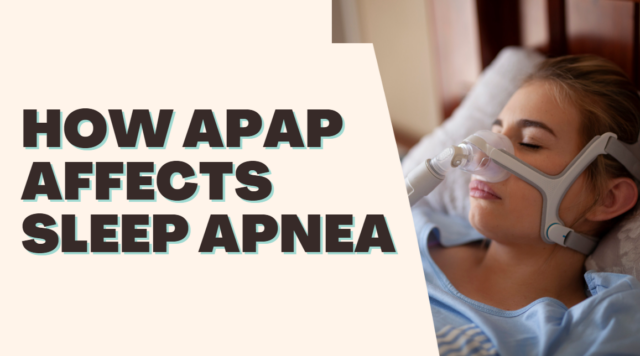If you have been diagnosed with sleep apnea, it means your breathing becomes shallow or even stops and starts while sleeping. The most likely treatment your doctor will suggest is using a device to maintain positive airway pressure while you rest.
These machines pump air into your lungs and prevent your throat from closing up while you sleep. One type is automatic positive airway pressure (APAP), also known as auto-titrating APAP.
How APAP Logging Works
Aside from APAP, two other major types of positive airway pressure machines exist: CPAP (continuous positive airway pressure) and BiPAP (bilevel positive airway pressure).
APAP uses software to automatically adjust the amount of air provided during sleep to meet individual needs.
Sleeping on your back, for instance, may lead to more frequent breathing interruptions due to relaxed tongue and jaw muscles that block airflow. In such cases, APAP raises the air pressure; your doctor will determine which upper and lower limits of pressure are ideal for you.
Why Use APAP Login?
Studies have indicated that all types of positive airway pressure may work equally well to promote sleep. Standard CPAPs have the longest track record and are the most widely used type, plus they’re simpler and less expensive than other machines available.
Some insurance plans may require you to begin using CPAP initially, then switch to APAP or BiPAP if the effects don’t last.
If you prefer variable airflow during your sleep, an APAP may be the better option for you. Reasons such as:
- Are you prone to tossing and turning in bed
- A deep sleeper
- Have allergies or stuffy nose
- Drink alcohol close to bedtime
- Lose or gain weight frequently
- Want to avoid doctor visits for every change of air pressure
- Or are uncomfortable with fixed air pressure from CPAP machines? Here’s what else you should consider before making your decision:
Comparing CPAP users and those who try APAP, those who switch often report a slightly better quality of life and less daytime sleepiness.
Drawbacks of APAP
These sophisticated machines use algorithms to continuously calibrate the amount of pressure necessary to keep your upper airway from collapsing. Unfortunately, they can be costly and your insurance plan may not cover it.
Other issues to consider with APAP include:
Apnea type. APAP (Active Positive Airway Pressure) has not been extensively researched with people suffering from central sleep apnea syndrome, where signals from your brain to muscles controlling breathing become disrupted. On the other hand, obstructive sleep apnea occurs when something blocks your upper air passageway.
Health Issues. You may not qualify for APAP if you have heart failure, chronic obstructive pulmonary disease (COPD), obesity or opioid use that causes breathing issues.
Leaks. Your APAP may not work correctly if the mask fits poorly or the seal isn’t tight enough, especially if you move around a lot during sleep or need higher air pressure settings. This could be an issue if these factors are present for you.
How to Use it
APAP comes with a mask that fits over your mouth, attached to a small device that gently pushes air into your throat.
If your sleep apnea is uncomplicated, you might be able to begin using an APAP immediately after receiving a diagnosis from your doctor–without needing to visit a sleep center first.
Once your training is over, make sure you feel confident using your APAP. Your checklist may include:
Before using APAP, make sure the mask fits securely and inform your doctor if it doesn’t stay on or leaks air.
Give yourself time to get used to the machine and varying air pressure before initiating treatment.
Ask if tracking symptoms is beneficial so that APAP can determine how much it helps with relief symptoms.

